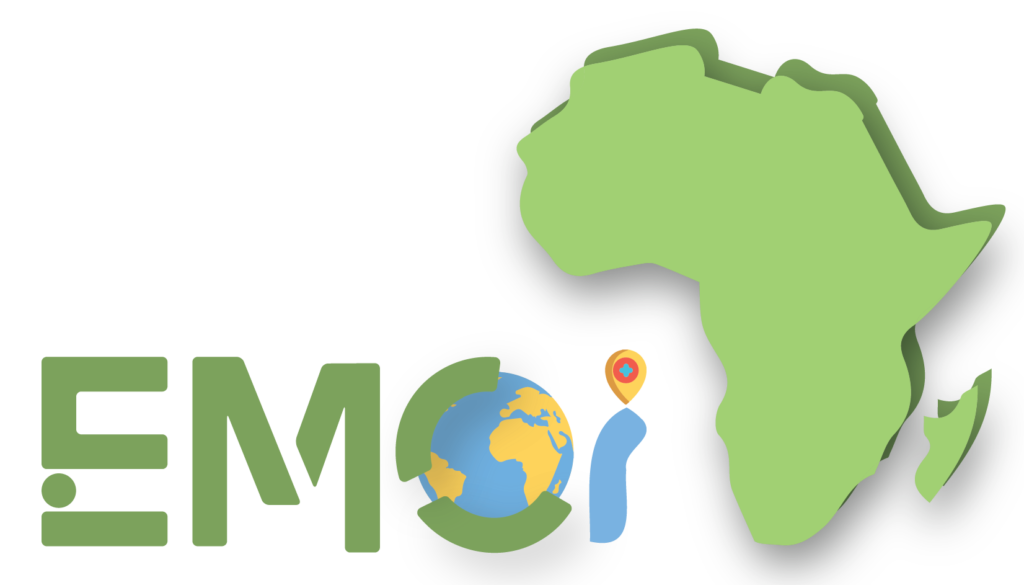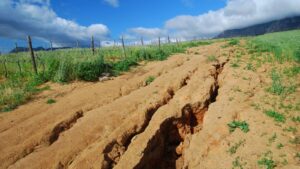Man and His Environment
The relationship between man and the environment is a complex one of profound interconnectedness, transcending the boundaries of mere environmental discourse. Interconnectedness and interdependency are a dynamic interplay that resonates globally as we grapple with the starring consequences of an age-old struggle between human consumption and environmental conservation. It has become obvious that harmonious coexistence is not just a lofty ideal; it is a necessity for the survival and prosperity of man and the planet we call home.
Consumption-Conservation Conflict
Throughout history, man has relentlessly pursued resource exploitation, harnessing it for sustenance, comfort, and progress, often with little regard for the environmental consequences. This unbridled consumption drive comes at a steep cost to the environment. The consequences of this unbalanced relationship are now more apparent than ever, as we grapple with the existential threats posed by a changing climate, the loss of biodiversity, and the depletion of natural resources.
Conservation efforts have emerged as a countermeasure to the environmental imbalance. Policies, laws, and various engagements by the government, private institutions, and other stakeholders to ensure balanced coexistence between man and his environment represent a fundamental shift. The conservation initiative calls for deep-seated respect for nature, a commitment to sustainable practices, and a global effort to address environmental challenges. Embracing this concept is not just a matter of ecological responsibility but a prerequisite for the continued well-being and survival of humanity.
These challenges constitute the crux where development aspirations collide with the imperative of environmental preservation.
Measuring the intensity of human Footprint
Human Impact Influence (HII) is a metric that quantifies human impact on the environment. The HII allows comprehensive measurement and evaluation of the extent of human activities influence the environment. It provides a numerical representation of the pressure exerted on the ecosystem through the combined impact of a number of indicators, including but not limited to the following:.
Population Density
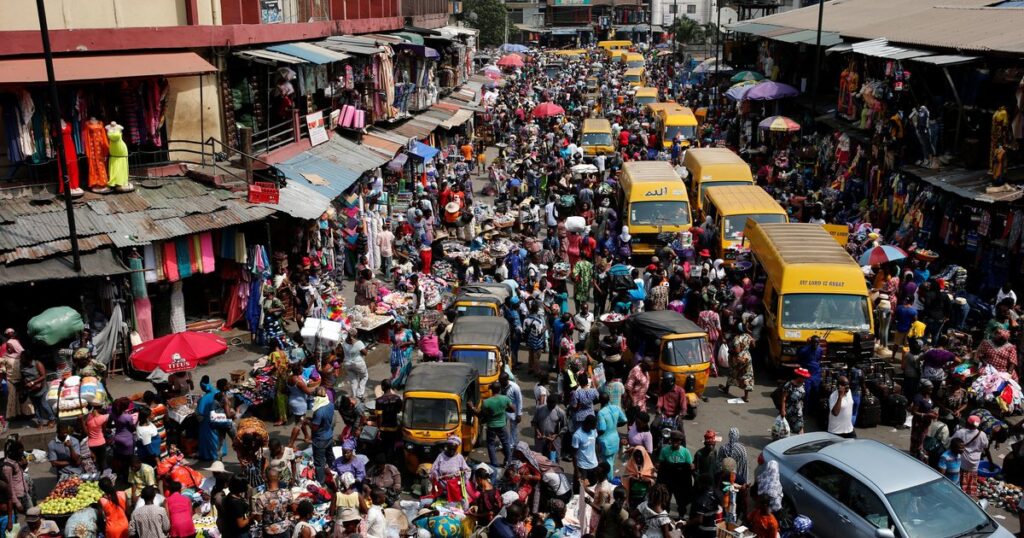
Lagos, Nigeria’s economic hub, exemplifies the challenges of human footprints on the environment. As a mega-city with an estimated population of 15.4 million inhabitants as of 2022 (reference). The high flux of people and industries in the state continues, resulting in the need for more housing units, traffic congestion, poor waste management, and environmental pollution, accentuating the HII value. The increasing demand for resources and infrastructural needs exert pressure on the ecosystem.
Deforestation and Construction
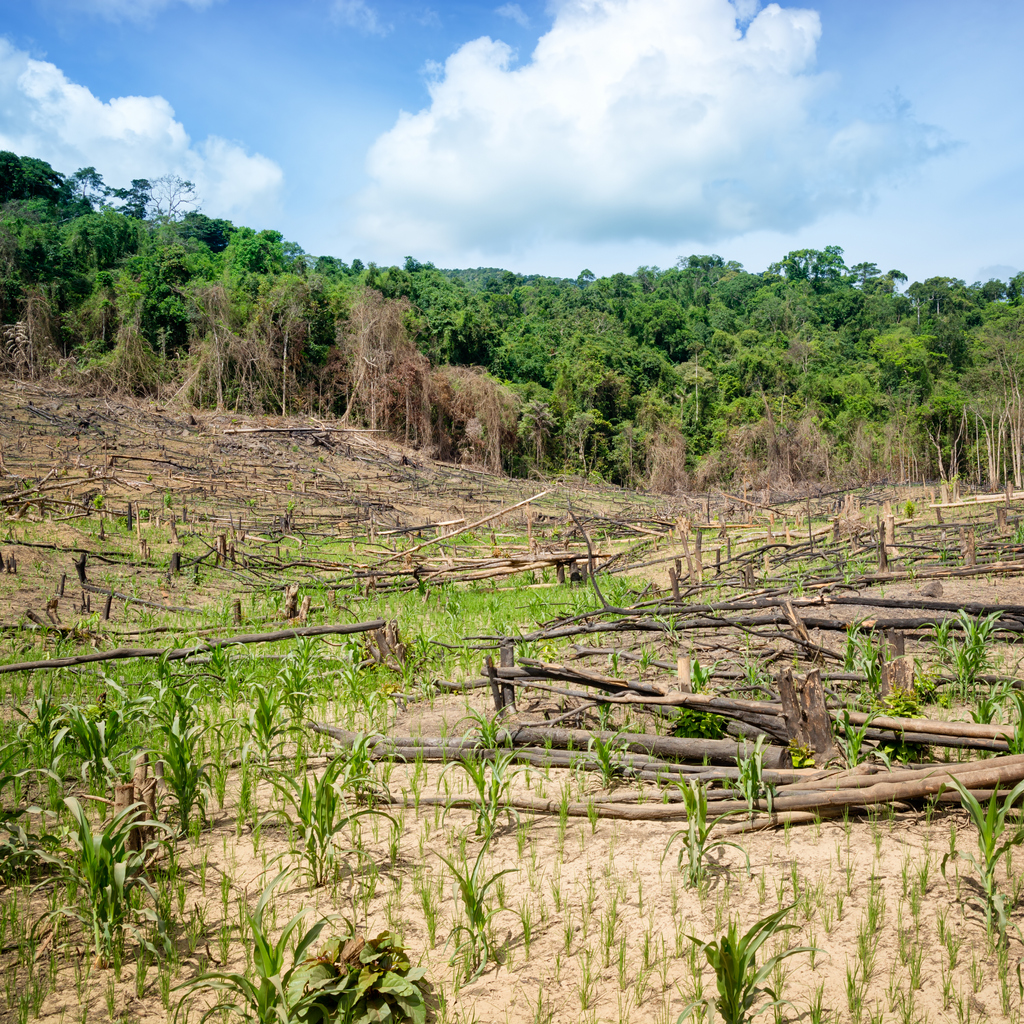
The high demand for land and heavy construction activity to accommodate its high population, continuous urbanization, and industrialization have left an indelible mark on its landscape. Lagos’s rapid urbanization necessitates extensive construction activities and demands more infrastructure, housing, and resources, which, while driving economic growth, also trigger environmental concerns. This mirrors the global trend where urban areas are expanding to accommodate increasing populations, often at the expense of natural habitats and ecosystems. The continuous exploration of deforestation and clearing of forests for urban expansion and resource extraction significantly result in soil degradation, heightened pollution levels, habitat destruction, altered microclimates, and diminished biodiversity, thereby escalating the HII.
Traffic Congestion and Pollution
It would be impossible to talk about the human impact in Lagos without touching on the twin specters of traffic congestion and pollution. The relentless flow of vehicles through the streets of Lagos contributes to increased traffic congestion and elevated levels of air and noise pollution. This congestion leads to longer commute times, increased fuel consumption, and higher greenhouse gas emissions from vehicles idling in traffic. Emissions from cars, trucks, and motorcycles release harmful pollutants such as particulate matter (PM2.5 and PM10), nitrogen oxides (NOx), sulfur dioxide (SO2), and volatile organic compounds (VOCs). Alongside air pollution, traffic congestion also generates high levels of noise pollution. The constant honking, engine noise, and sirens add to the stress and discomfort of urban living. These pollutants are harmful to the atmosphere, vegetation, soil quality, and water bodies. Additionally, the release of greenhouse gases contributes to climate change, which further exacerbates environmental problems globally. These factors intricately weave into a high Human Influence Index, negatively impacting the environment and human well-being.
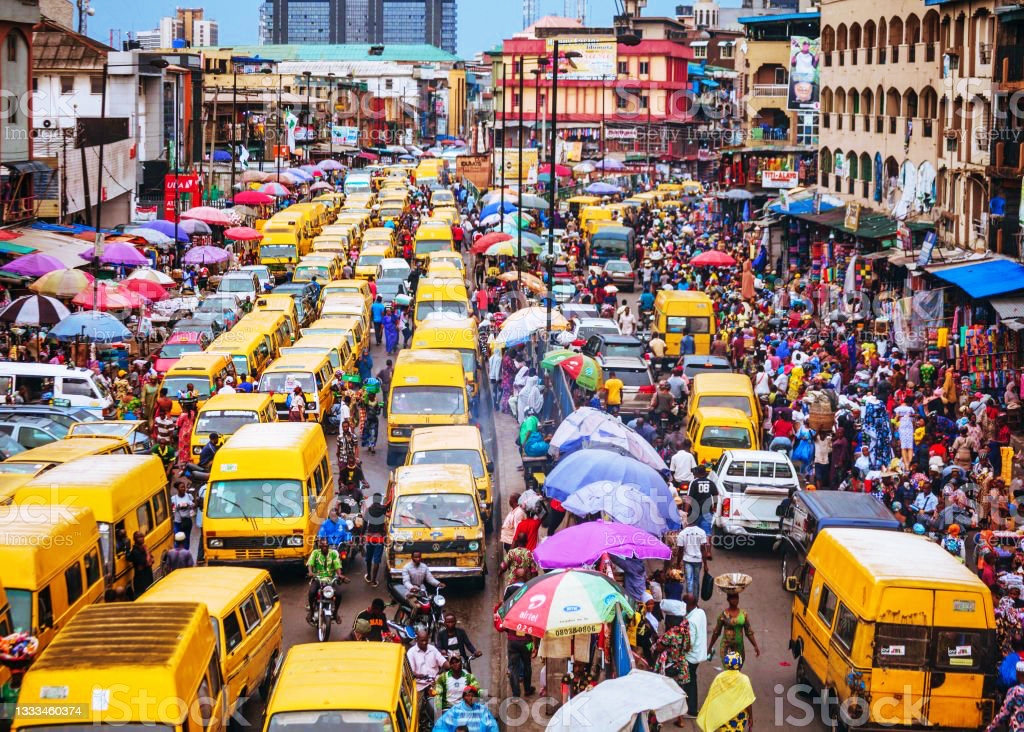
High Ecological Footprint
Man’s impact on the ecosystem, often referred to as the human ecological footprint, encompasses a wide range of interactions and consequences that humans have on the natural environment. These impacts can be both positive and negative, but in recent times, human activities have predominantly resulted in detrimental effects on ecosystems worldwide with far-reaching environmental ramifications. In the context of Lagos, we focus on the culmination of humans’ significant presence within the local ecosystem. By employing visual representation, we seek to provide a vivid understanding of the potential consequences and convey the following critical environmental challenges that could be triggered as a result of negative human actions.

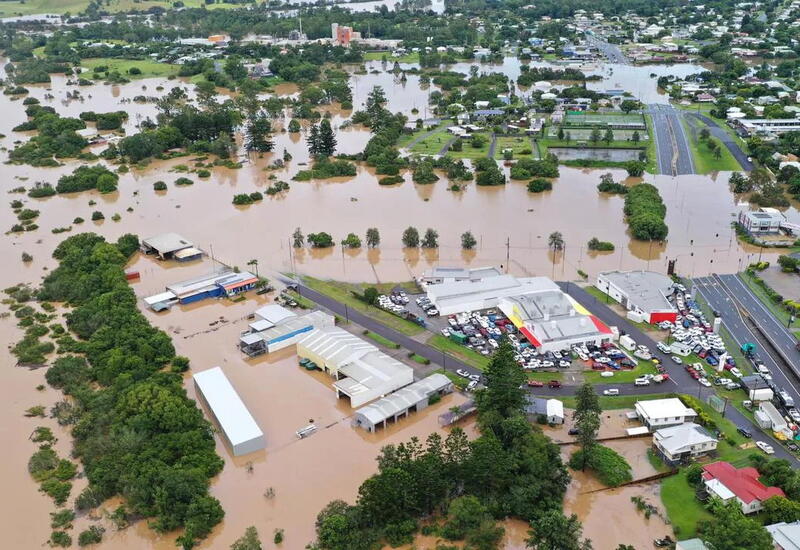
- Urban Heat Islands (UHIs): The expansion of urban areas, characterized by heat-absorbing surfaces and materials like asphalt and concrete, along with increased energy consumption, contributes to the formation of UHIs. These localized areas experience higher temperatures than their rural surroundings, leading to heat-related ecological and human health issues.
- Ocean Acidification: Increased CO2 levels in the atmosphere lead to higher CO2 concentrations in seawater, causing ocean acidification. This has adverse effects on marine ecosystems, especially coral reefs and shell-forming organisms.
- Global Warming: Human activities, particularly the combustion of fossil fuels for energy and transportation, release greenhouse gases into the atmosphere and imparts an inexorable warming of the Earth’s climate system. These gases, including carbon dioxide (CO2) and methane (CH4), trap heat and contribute to global warming, resulting in rising average temperatures worldwide, sea level rise, and ecosystem perturbations.
- Climate Change: Global warming is a primary driver of climate change. It alters weather patterns, increases the frequency and severity of extreme weather events, and disrupts ecosystems. Climate change affects ecosystems through shifts in temperature, precipitation, and the distribution of species.
- Flooding: Human-induced alterations in land use patterns, notably deforestation and urbanization, compound the incidence and severity of flooding. Deforestation reduces forests’ innate capacity to mitigate and regulate rainfall, while urban expansion leads to increased impermeable surfaces, reducing natural drainage systems. Poor land management practices, furthermore, can exacerbate soil erosion, increasing the vulnerability to flooding.
Other Ecological footprints includes:
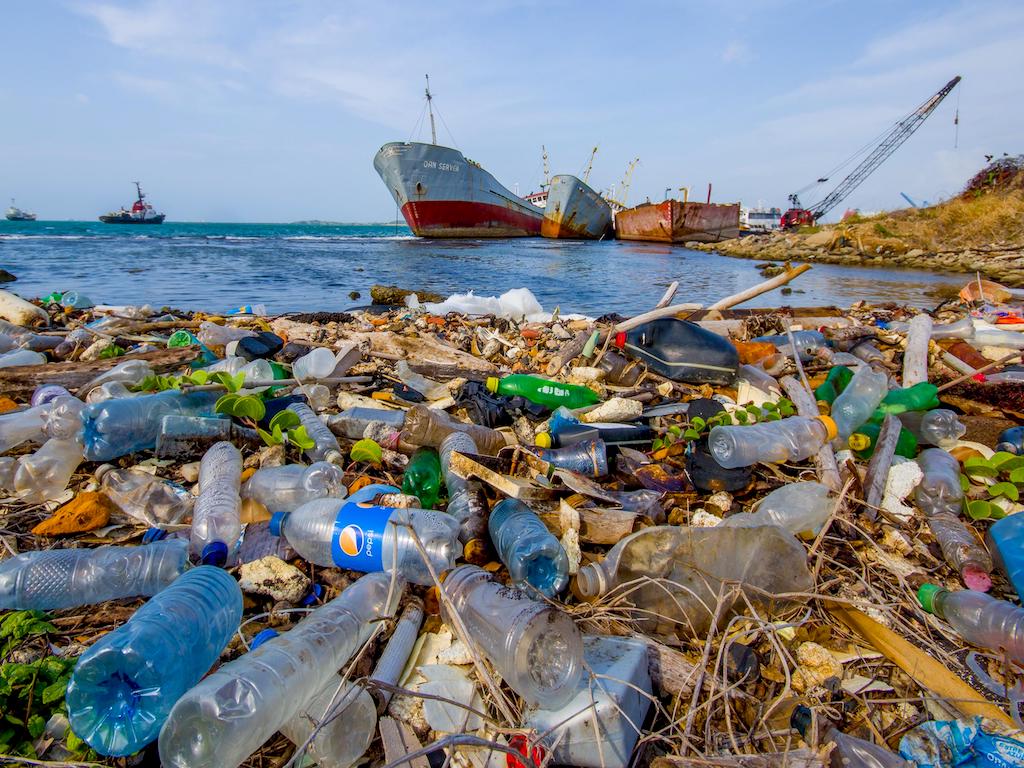
- Water Pollution: Human activities release pollutants into water bodies, disrupting aquatic ecosystems. Excessive nutrient runoff, for example, can lead to algal blooms, hypoxia, and dead zones in oceans and freshwater systems.
- Resource Depletion: The extraction of minerals, fossil fuels, and other resources often leads to environmental degradation, habitat destruction, and the depletion of non-renewable resources.
- Plastic Pollution: The widespread use and improper disposal of plastics contribute to pollution in oceans and terrestrial ecosystems, harming wildlife and ecosystems.
- Loss of Ecosystem Services: Human-induced changes to ecosystems, including deforestation and habitat destruction, result in a loss of essential ecosystem services like pollination, water purification, and carbon sequestration.
- Loss of Biodiversity: Human-driven species extinction, attributed to habitat destruction, overexploitation, and other activities reduces genetic diversity and weakens ecosystems’ resilience to environmental changes
Sustainable Living and Cultivating Greener Practices
To mitigate the adverse effects of heavy construction practices, deforestation, and pollution in Lagos, it is imperative to infuse sustainability into the fabric of daily life. Encouraging eco-friendly practices among individuals and communities is pivotal. These sustainable actions not only enhance living conditions but also address pressing environmental challenges. By embracing such practices, Lagosians can curtail their ecological footprint, elevate their quality of life, and contribute to positive global and local change. These endeavors, aimed at both immediate and future benefits, pave the way for a more sustainable and resilient city. Some of the most challenging issues faced today in Lagos include high energy consumption, improper waste, and the scarcity of clean water.

Despite the abundance of water sources available to Lagos, the supply of water is inadequate due to urbanization, creating acute shortages among residents. Water supply is primarily from the government-serviced water systems or through boreholes and wells drilled by private organizations or individuals. The inadequacy of water supply is a direct consequence of the presence of sediments and debris impeding the waterways, the irregular positioning and coverage of water points and connecting lines that provide water to large areas. This blockage is often experienced as a result of all manner of construction work situated near waterways and water bodies, placing undue pressure on these channels and constricting the flow of water.
Conserving water not only benefits the environment but also helps mitigate water scarcity This can be achieved by clearing out pipelines and waterways for a start and fixing leaks promptly to prevent water wastage. Install low-flow faucets and showerheads to reduce water consumption without compromising water pressure. Rainwater harvesting systems should be created to collect and reuse rainwater for non-potable purposes such as garden irrigation and flushing toilets. Drought-resistant and water-efficient landscaping techniques plants should be adopted to reduce outdoor water use. Garden grooming and irrigation should be carried out in the cooler times of the day to minimize the rate of water evaporation. Water conservation helps preserve this precious resource and reduce the strain on local water supplies.
Similarly, reducing waste and proper waste disposal practices are fundamental for a clean and healthy environment in Lagos. By embracing recycling programs and sorting waste properly to divert recyclable materials from bins and landfills it becomes possible to reduce the strain on disposal sites. Additionally, introducing composting bins for organic waste is an effective method to reduce the number of biodegradable materials sent to landfills. Composting not only cuts down on waste but also produces nutrient-rich compost that can enrich soil in the area. Replacing the use of single-use plastics with usable bags, water bottles, and containers, and also reducing the number of non-perishable items in bulk, we reduce packaging waste and the littering of non-biodegradable materials, and in turn environmental pollution.
Another key sustainability practice that should be adopted is renewable energy sources. Transitioning to renewable energy, such as solar panels or wind turbines, reduces reliance on fossil fuels for electricity generation. By harnessing the power of the sun or wind, individuals and communities can significantly lower their carbon footprint and contribute to cleaner air and a healthier environment. Embracing renewable energy reduces air pollution and greenhouse gas emissions, leading to cleaner air and a more sustainable energy future.
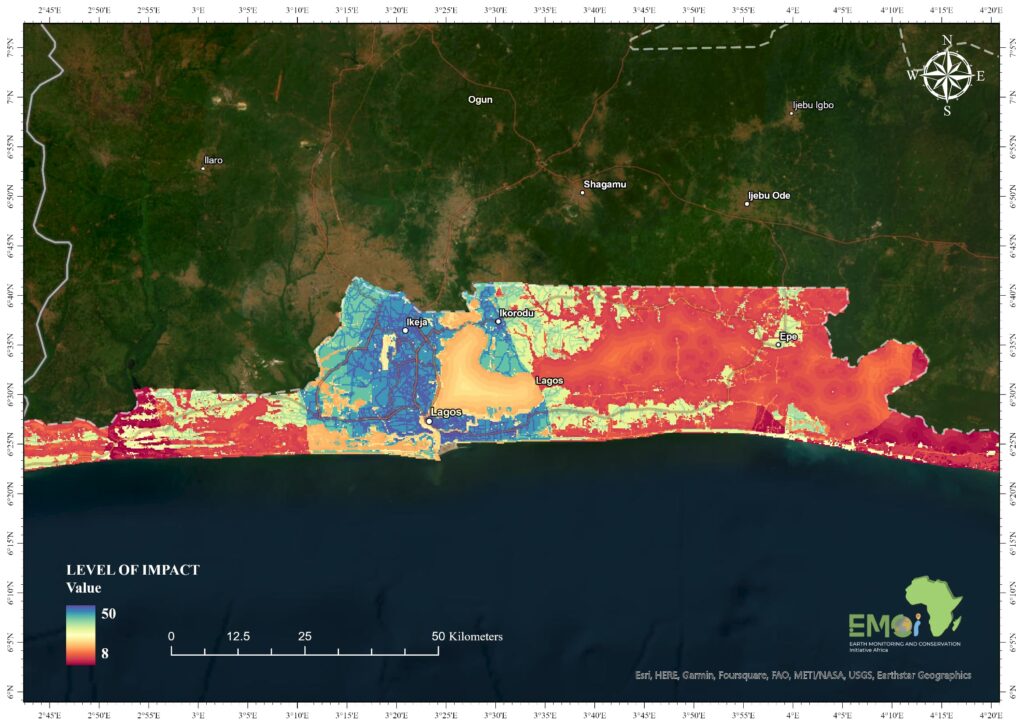
Furthermore, as a city that boasts a population of over 15 million, we must strive to reduce our carbon footprint and air pollution by incorporating eco-friendly transportation alternatives in Lagos’s urban lifestyle. This includes biking, walking short distances, carpooling, and using public transit systems which not only reduces traffic congestion, air pollution, greenhouse gas emissions, and our carbon footprint but also contributes to improved health, pedestrian-friendly streets, and a lower HII.
By embracing these sustainable commuting methods and proactively resolving conflicts, Lagos can navigate the challenges of its congested streets and build a more sustainable, inclusive, and environmentally friendly transportation system while contributing to a lower Human Influence Index (HII).
